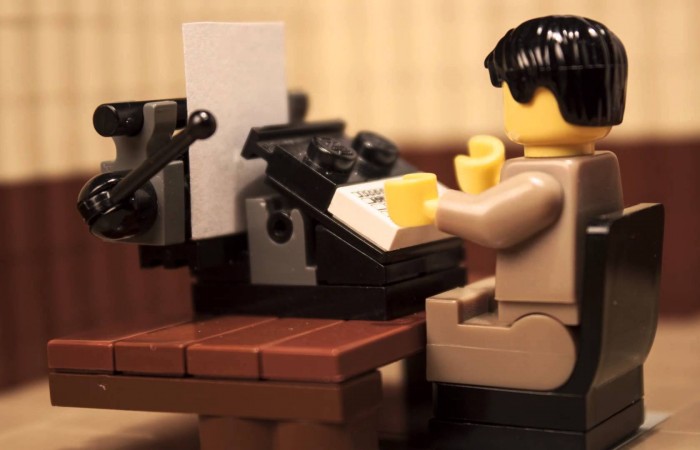
Building and Rebuilding a Brand Narrative: Lessons Your Business Can Learn from LEGO
By Melissa Rodier
There are some brands that are eponymous, so co-mingled with their products that their names become the new vocabulary. It’s easy to rattle off a list of such brands: Kleenex will do for any tissue, Google is a handy verb for any online search, Windex will work as a noun or a verb for any glass cleaner, and of course LEGO would be the word for brick-shaped building blocks, regardless of manufacturer.
These brands are so ingrained in our collective cultural psyche that we might take for granted the importance of their brand narrative. However, even for a culturally colossal brand, forgetting the importance of a narrative can be a major problem.
In a recent interview with Skyword, LEGO’s Vice President of Marketing, Michael Moynihan revealed not only the identity crisis that LEGO faced at the beginning of the 21st century, but also how rediscovering their brand narrative helped LEGO turn the tide.
In 2000, things at LEGO hit a brick wall, so to speak. Moynihan is quick to diagnose LEGO’s problem at the time, as he reveals, “We lost sight of what we meant to our fans and how best to serve their needs. We thought the way to grow the business was to find ways for the LEGO brand to be everything to everyone, and we took our eye off the ball of being the best construction toy for children who like to build. Once we refocused on doing what we do best, we quickly found ourselves on a path to renewed growth.” The issue that Moynihan identifies, of trying to be all things for all people, plagues brands of all shapes and sizes. So often, brands try to do everything, attempting to become veritable jacks-of-all-trades, and miss out on the opportunity to truly establish themselves as the masters of what they really do well. It’s an easy and dangerous trap to fall into, and one that can be more easily avoided with an honest evaluation and study of your brand.
One of the healthiest things a brand can do is sit down and truly evaluate where they are now, where they have been, and where they’re going. Brands need to figure out why they exist, and brand stories must reflect what inspired them to become a part of the market.
Unfocused brands can confuse or alienate consumers. Moynihan learned this lesson in those murky LEGO days of the early 2000s. He advises companies to learn from LEGO’s error: “It’s easy to get caught up in the potential your brand has to be bigger, better and more profitable. We found that the best way to grow was to do what we do best, not expand the brand into areas that consumers couldn’t readily follow or relate to their understanding of the brand. We learned that a brand can only be so elastic, and that consistent growth comes from prioritizing focus on consumer needs. Once we returned to that approach, brand growth was organic and rapid.” The prioritization that Moynihan mentions is helpful to consumers, but it is also hugely beneficial for employees. Focusing your team on the driving ‘why’ behind your brand can be a game changer.
In fact, in realigning their narrative and focusing on their own ‘why,’ LEGO was able to give their employees a renewed passion for their brand, as Moynihan explains, ” It’s amazing how very simple and aligned words can drive organizational energy and motivate teams to start pulling in the same direction. In crystallizing our brand mission and purpose, the prioritization of four core promises—Play, Partner, Planet and People—and defining the core values with which we seek to achieve these goals, the brand framework has become the roadmap (and rally cry) for 15,000 LEGO employees around the world to relate to and understand how their work fulfills our greater purpose.”
The team bringing your product to market is a major stakeholder in your brand’s success. Getting your team involved and invested in the brand narrative is an invaluable tool in building your brand and taking it to new heights.
So how do you discover (or rediscover) your brand’s narrative?
Begin by asking yourself why your brand exists. The ‘why’ of any brand is a touchstone for creating the most compelling brand narrative. For LEGO, the answer is to “inspire and develop the builders of tomorrow.”
‘Why’ has changed the world over and over again. And that’s because as Simon Sinek articulates in his “How great leaders inspire action” TedTalk, “People don’t buy what you do; they buy why you do it.”
Figure out your why, and the rest of your story can truly begin to unfold. Or better yet, figure out your why, and the rest of your story can be built one brick at a time.
Melissa Rodier is an Associate at Woden. Whatever your storytelling needs may be, let Woden help. Download our free StorytellingBlueprint, or send us an email at connect@wodenworks.com to discuss how we can help tell your story.


